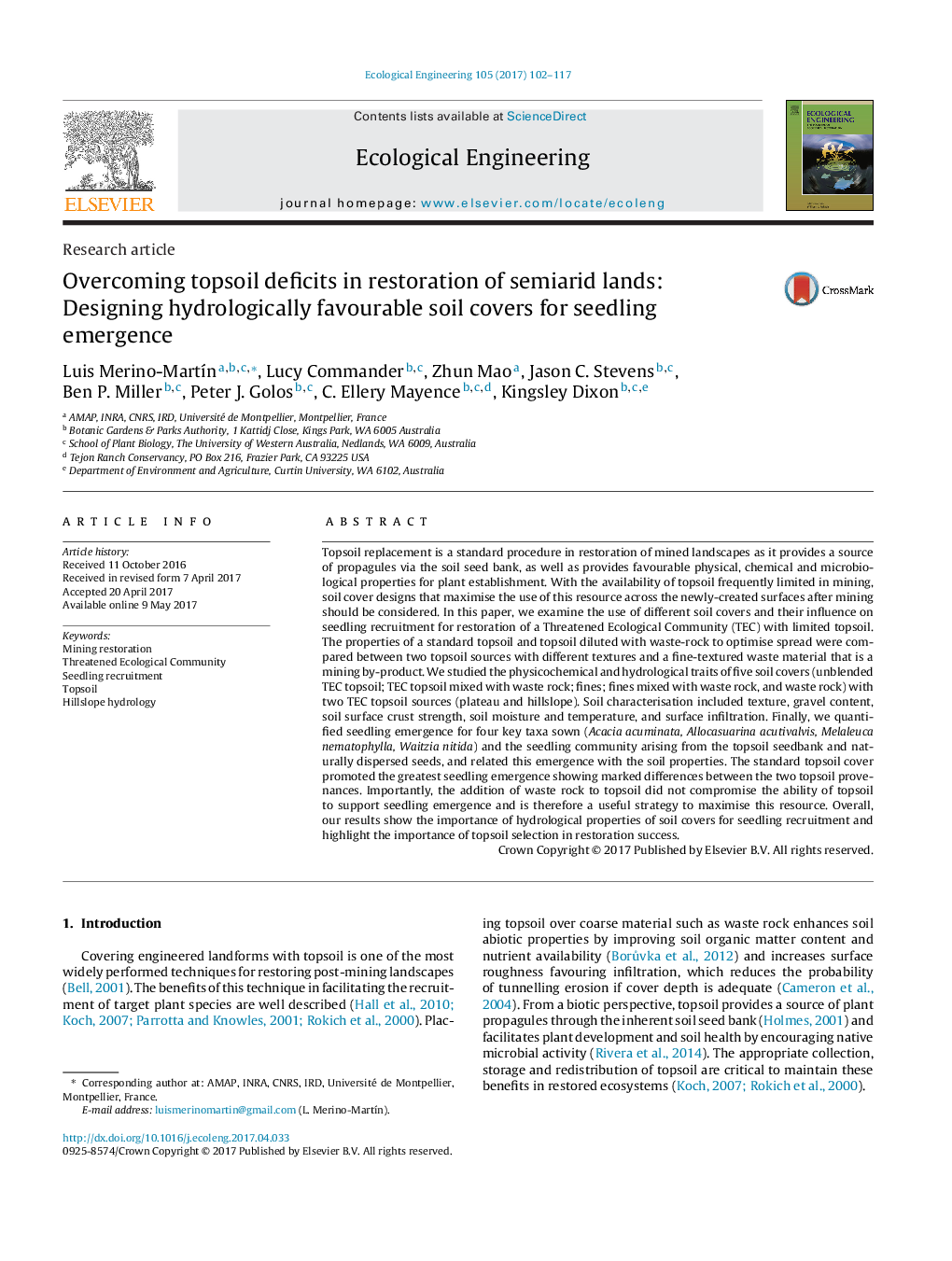| Article ID | Journal | Published Year | Pages | File Type |
|---|---|---|---|---|
| 5743603 | Ecological Engineering | 2017 | 16 Pages |
â¢Soil physical traits assessed in this study and their associated hydrological soil properties play a key role on seedling emergence.â¢The interconnectivity of soil attributes suggests a hierarchical structure of importance of factors affecting seedling emergence (soil moisture over surface strength).â¢Even when topsoil physicochemical traits are not favourable in terms of hydrological functioning, the soil seed bank makes topsoil essential for restoration.â¢Clear differences between soil pedo-hydrological traits of the two topsoil covers were observed and were the drivers in differences in seedling recruitment.â¢If there is a topsoil deficit, it is recommended that topsoil is mixed with waste-rock to facilitate topsoil being spread over a greater surface area.
Topsoil replacement is a standard procedure in restoration of mined landscapes as it provides a source of propagules via the soil seed bank, as well as provides favourable physical, chemical and microbiological properties for plant establishment. With the availability of topsoil frequently limited in mining, soil cover designs that maximise the use of this resource across the newly-created surfaces after mining should be considered. In this paper, we examine the use of different soil covers and their influence on seedling recruitment for restoration of a Threatened Ecological Community (TEC) with limited topsoil. The properties of a standard topsoil and topsoil diluted with waste-rock to optimise spread were compared between two topsoil sources with different textures and a fine-textured waste material that is a mining by-product. We studied the physicochemical and hydrological traits of five soil covers (unblended TEC topsoil; TEC topsoil mixed with waste rock; fines; fines mixed with waste rock, and waste rock) with two TEC topsoil sources (plateau and hillslope). Soil characterisation included texture, gravel content, soil surface crust strength, soil moisture and temperature, and surface infiltration. Finally, we quantified seedling emergence for four key taxa sown (Acacia acuminata, Allocasuarina acutivalvis, Melaleuca nematophylla, Waitzia nitida) and the seedling community arising from the topsoil seedbank and naturally dispersed seeds, and related this emergence with the soil properties. The standard topsoil cover promoted the greatest seedling emergence showing marked differences between the two topsoil provenances. Importantly, the addition of waste rock to topsoil did not compromise the ability of topsoil to support seedling emergence and is therefore a useful strategy to maximise this resource. Overall, our results show the importance of hydrological properties of soil covers for seedling recruitment and highlight the importance of topsoil selection in restoration success.
